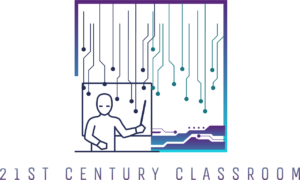Effective communication plays a pivotal role in achieving professional excellence. Whether it’s conveying ideas, collaborating with colleagues, or building relationships, mastering the art of communication is a valuable skill set that can greatly enhance your career. In this blog post, we will explore various strategies and techniques to help you become a proficient communicator in a professional setting.
Understanding the Basics of Effective Communication:
To lay a strong foundation, let’s start by understanding the basics of effective communication. Effective communication involves delivering clear and concise messages that convey your thoughts accurately. It encompasses both verbal and non-verbal cues, including body language and active listening skills. By honing these fundamental aspects, you can ensure your messages are understood and impactful.
Developing Communication Skills:
- Clear and Structured Messages:
Crafting messages that are organized and concise is crucial in professional communication. Before communicating, take time to gather your thoughts and structure your message to ensure clarity and coherence. By doing so, you’ll avoid misunderstandings and keep your audience engaged.
- Empathy and Emotional Intelligence:
Empathy is a key element in effective communication. Understanding the emotions of others and responding with empathy fosters a positive and conducive environment. Developing emotional intelligence allows you to navigate challenging situations with composure and tact, strengthening your professional relationships.
- Non-Verbal Communication:
Non-verbal cues, such as body language and facial expressions, play a significant role in communication. Maintaining eye contact, using appropriate gestures, and aligning your body language with your message can enhance your credibility and convey confidence.
Tailoring Communication for Different Audiences:
Adapting your communication style to suit different individuals and groups is essential for effective communication. Consider the demographics, cultural backgrounds, and language preferences of your audience. By tailoring your approach, you can establish stronger connections, promote understanding, and avoid misinterpretations.
Overcoming Communication Barriers:
Communication barriers can hinder effective interaction. Here are some strategies to overcome them:
- Active Listening:
Active listening involves fully engaging with the speaker, providing feedback, and asking clarifying questions. This practice promotes mutual understanding and helps you grasp the intended message accurately.
- Conflict Resolution:
Conflict can arise in professional settings, but effective communication can help resolve it. Employ active listening and empathy to understand different perspectives, find common ground, and foster a collaborative solution.
- Dealing with Misunderstandings:
Misunderstandings can occur despite our best efforts. When faced with misunderstandings, take the initiative to clarify information and rephrase your message. Seeking feedback and confirmation ensures everyone is on the same page.
Building Professional Relationships through Communication:
- Networking and Relationship Building:
Effective communication is essential for networking and building professional relationships. Be confident, attentive, and engaging when interacting with others. Building trust and rapport through communication can open doors to new opportunities.
- Collaboration and Teamwork:
Strong teamwork relies on effective communication. Practice active participation, open dialogue, and clear articulation of ideas within your team. By fostering a supportive and communicative environment, you can achieve better outcomes collectively.
Communication Tools and Technologies:
In today’s digital age, leveraging communication tools and technologies is crucial for professional success. Pay attention to proper email etiquette and professionalism when corresponding digitally. Video conferencing and virtual meetings provide opportunities for face-to-face interactions, even in remote settings.
Takeaway
Mastering the art of communication is an ongoing process that requires practice and continuous improvement. By understanding the basics, developing essential skills, adapting to different audiences, overcoming barriers, and building professional relationships, you can enhance your communication prowess. Remember, effective communication is not just about speaking—it’s about connecting, understanding, and achieving professional excellence. Start implementing these strategies and witness the positive impact they can have on your career. Share your experiences and thoughts in the comments below and continue the conversation on effective communication.

